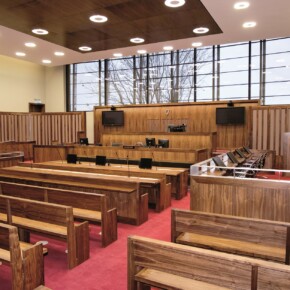How to reduce the impact of building projects on local communities
Padraig Conlon 10 May 2024
We reported widely during 2021 to 2023 on the impact of major construction projects on the residents of Cherrygarth, a small 38 house estate near Stillorgan.
In our series on the negative impacts of large scale building projects on local communities, we consistently heard about noise, dirt, construction traffic and environmental pollution.
Independent third-party environmental monitoring in construction projects is a critical step in ensuring that the environmental protection measures in place are effective.
This process should involve having a third-party organisation review and verify the process and results of the environmental monitoring conducted by the construction company.
This form of validation would help to ensure that the data is accurate, and that the construction company is complying with all applicable environmental regulations.
To ensure confidence in the process the weekly results of noise and environmental monitoring should be available to residents and the general public.
The current DLRCC Development Plan 2022 – 2028 requires major planning applications to be accompanied by a comprehensive Construction Management Plan (CMP), which should deal with all the environmental, traffic, parking etc. issues that any major development would create.
In practise no CMP is included in planning applications except for a requirement to submit one prior to the commencement of construction.
This is only submitted after planning permission has been granted and avoids any scrutiny by third parties.
If properly implemented, this would allow input from interested parties at the initial planning stage.
A properly constructed CMP would be required to have specific limits and targets for environmental nuisances such as dust, noise, vibrations, traffic volumes, duration of works etc.
Hence, Planning Enforcement inspectors would have specific criteria against which to act, whereas, in the absence of such limits or targets, enforcement is very difficult, particularly where the highest burden of proof is required for a successful prosecution.
Also Health and Safety regulations as they apply to construction, local authorities and transport must be followed and enforced.
The recent debacle in Cherrygarth is regarded locally as a disgrace and a reflection of Dun Laoghaire Rathdown County Council’s (DLR) unwillingness and inability to enforce the rules.
DLR approved the CMPs for both the Thornhill and Oatlands sites and these were either so vague or as lacking in detail as to be unenforceable.
Planning authorities in the US and Canada are increasingly involving resident’s groups in planning enforcement.
This is because residents often have a deep understanding of their communities and can be effective in identifying and reporting violations of planning regulations.
DLR’s recent involvement of a group of residents from Cherrygarth to belatedly help resolve residual issues arising from the Oatlands debacle worked very well for both the Council and residents.
If this had been in place from the start of the project, much grief and expense would have been saved.
An ad hoc residents’ group from Cherrygarth and Oatlands could help the Planning Authority to identify potential problems and possible solutions.
Local concern is that DLR is not doing enough to protect the environment and the quality of life of its residents.
No consideration appears to be given to the human cost of building multi-storey blocks adjacent to bungalows or two-storey houses.
Even the language used tries to dehumanise the process; for example, in the case under consideration at 19(b), the writer uses the term ‘local receptors’ when referring to people living adjacent to the proposed development.
In the Oatlands case, the planning permission specified that the developer maintain certain mature trees on the site.
If the planning permission specifies that the developer must maintain the mature trees, a third party purchaser will normally be obliged to do so after the property is sold.
This is because, in law, the planning permission binds the land, not just the developer.
DLR needs to clarify its position in this regard to ensure that a purchaser felling trees subject to a planning requirement to maintain the said trees could be in breach of their legal obligations and subject to prosecution.
In Oatlands, the builder complied with the requirement to maintain a certain number of mature trees.
However, when a number of houses were sold to third parties, residents were informed that at least one of them immediately felled the trees on their properties and DLR adopted the position that there was no issue with this.
This begs the question why impose a condition on a developer if it is not enforceable on the purchaser of a house in that development?











